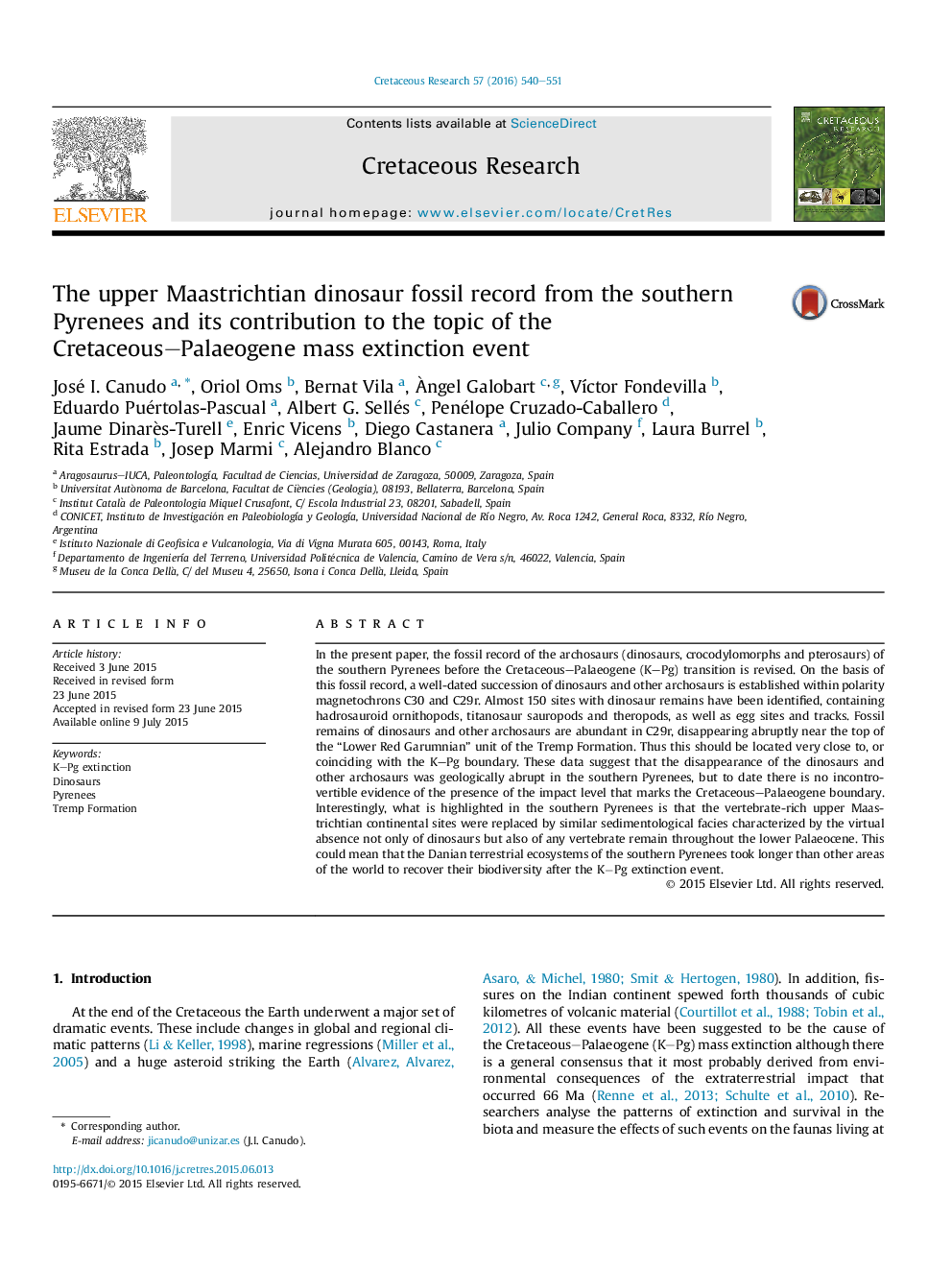| Article ID | Journal | Published Year | Pages | File Type |
|---|---|---|---|---|
| 4746821 | Cretaceous Research | 2016 | 12 Pages |
In the present paper, the fossil record of the archosaurs (dinosaurs, crocodylomorphs and pterosaurs) of the southern Pyrenees before the Cretaceous–Palaeogene (K–Pg) transition is revised. On the basis of this fossil record, a well-dated succession of dinosaurs and other archosaurs is established within polarity magnetochrons C30 and C29r. Almost 150 sites with dinosaur remains have been identified, containing hadrosauroid ornithopods, titanosaur sauropods and theropods, as well as egg sites and tracks. Fossil remains of dinosaurs and other archosaurs are abundant in C29r, disappearing abruptly near the top of the “Lower Red Garumnian” unit of the Tremp Formation. Thus this should be located very close to, or coinciding with the K–Pg boundary. These data suggest that the disappearance of the dinosaurs and other archosaurs was geologically abrupt in the southern Pyrenees, but to date there is no incontrovertible evidence of the presence of the impact level that marks the Cretaceous–Palaeogene boundary. Interestingly, what is highlighted in the southern Pyrenees is that the vertebrate-rich upper Maastrichtian continental sites were replaced by similar sedimentological facies characterized by the virtual absence not only of dinosaurs but also of any vertebrate remain throughout the lower Palaeocene. This could mean that the Danian terrestrial ecosystems of the southern Pyrenees took longer than other areas of the world to recover their biodiversity after the K−Pg extinction event.
